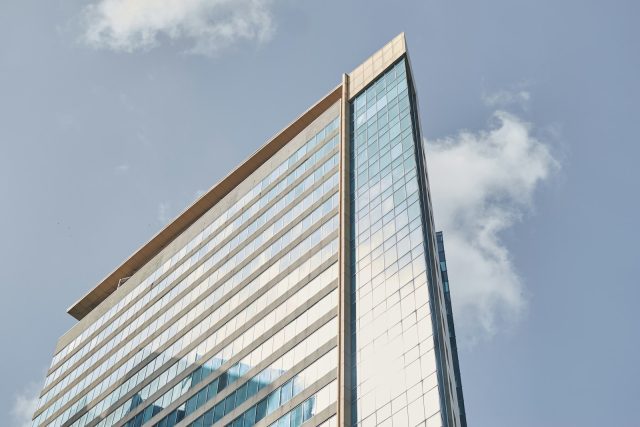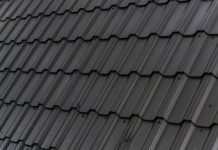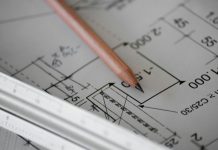
Your commercial building is probably one of your company’s biggest and most valuable assets. And like any major investment, its value depends on how well it’s maintained. Preventive maintenance isn’t glamorous, but it’s one of the smartest and most cost-effective ways to protect your property and extend the life of your systems and equipment.
Whether you own an office complex, retail space, or industrial facility, a consistent maintenance plan keeps small issues from snowballing into costly repairs. It also ensures your building remains safe, efficient, and welcoming for tenants and employees alike.
Here are five essential preventive maintenance tips you can use.
1. Schedule Regular HVAC Inspections
Your heating, ventilation, and air conditioning system is one of the most important components of your building. When it’s neglected, minor inefficiencies can quickly morph into major breakdowns.
Here are a few preventive HVAC maintenance tips you can use:
- Have filters replaced every one to three months, depending on usage.
- Clean coils and ducts regularly to improve airflow and reduce strain on the system.
- Schedule professional inspections twice a year — ideally before peak heating and cooling seasons.
- Check for refrigerant leaks, thermostat malfunctions, and worn belts or motors.
A proactive HVAC plan that accounts for these items will improve performance and also extend your system’s lifespan by several years. It’s a classic case of spending a little now to save a lot later.
2. Maintain and Inspect Your Roof
Your roof is your building’s first line of defense against the elements. Unfortunately, it’s often one of the most overlooked components of preventive maintenance. A small roof issue can escalate quickly, leading to leaks, insulation damage, structural deterioration…the list goes on.
To keep your roof in top condition, schedule commercial roof inspections and cleanings every couple of years. A qualified roofing contractor can identify issues you might miss — like loose flashing, clogged drains, ponding water, or minor membrane cracks — and address them before they become major repairs.
Regular maintenance also helps extend the lifespan of your roofing materials and ensures warranty coverage remains valid. Between inspections, make it a habit to visually check the roof after severe weather events and remove debris like branches or leaves that could block drainage systems.
3. Protect Your Plumbing and Water Systems
Leaks, corrosion, and water pressure problems can disrupt your company’s operations and cause serious damage if left unchecked. Because plumbing systems are largely hidden behind walls or beneath floors, issues can develop quietly and escalate before you realize what’s happening. That’s why preventive inspections are so important.
Start by checking pipes, valves, and joints regularly for moisture, rust, or mineral buildup. Even a small drip can signal a larger issue in the system. Then be sure to have your water heaters, boilers, and sump pumps inspected annually to confirm they’re working efficiently and safely. (Testing your building’s water pressure is also a smart idea.)
During colder months, be sure to insulate exposed pipes to prevent freezing, especially in basements or exterior walls. If your property has restrooms, kitchens, or irrigation systems, keep drains clear and monitor for slow flow — a sign of early blockages. Water intrusion can lead to mold, mildew, and structural damage, so quick attention makes all the difference. For extra protection, consider installing smart leak detection sensors. These can alert you instantly if a problem arises, helping you catch issues long before they turn into costly repairs.
4. Keep Electrical Systems Safe and Efficient
Your building’s electrical system powers everything. That means when something goes wrong, the consequences can be serious. Faulty wiring or overloaded circuits can lead to outages, equipment failure, or even fire hazards. But preventive electrical maintenance helps you avoid all of that while ensuring compliance with safety standards.
It’s best to schedule an annual inspection by a licensed electrician who can assess panels, wiring, and circuits. They’ll look for loose connections and signs of wear or overheating.
Make sure your backup generators and emergency lighting systems are also tested regularly so they’re ready when you need them most. Labeling circuits clearly helps with troubleshooting and response times during emergencies, while keeping electrical rooms clean and free of storage items reduces the risk of accidents.
Electrical maintenance often goes unnoticed until something fails, but when you stay ahead of it, you reduce risk, keep tenants safe, and maintain uninterrupted business operations.
5. Develop a Comprehensive Maintenance Calendar
Even the best maintenance plan won’t work if it isn’t organized. Creating a detailed maintenance calendar helps you stay consistent and anticipate future needs.
Start by categorizing your maintenance tasks into daily, monthly, quarterly, and annual checklists. For example:
- Daily: Inspect common areas, lighting, and restrooms for cleanliness and safety.
- Monthly: Test smoke detectors, fire extinguishers, and security systems.
- Quarterly: Review HVAC filters, pest control, and plumbing systems.
- Annually: Schedule roof inspections, electrical system audits, and elevator servicing.
Digital maintenance management tools can make this even easier. There are dedicated software platforms that let you assign tasks, log service reports, track vendor performance, and generate reminders automatically. That means no more scrambling to remember when the last inspection took place or which component is due for replacement.
Your maintenance calendar should evolve with your building. As equipment ages or occupancy changes, adjust schedules and priorities accordingly.
Adding it All Up
Your commercial building is too important to wait for breakdowns and maintenance issues. Instead, you need to invest in preventive work so that you can stay safe, efficient, and operational around the clock.
Start with the tips mentioned here, but don’t limit yourself to just these areas. Always look for additional ways to keep your building safe!



